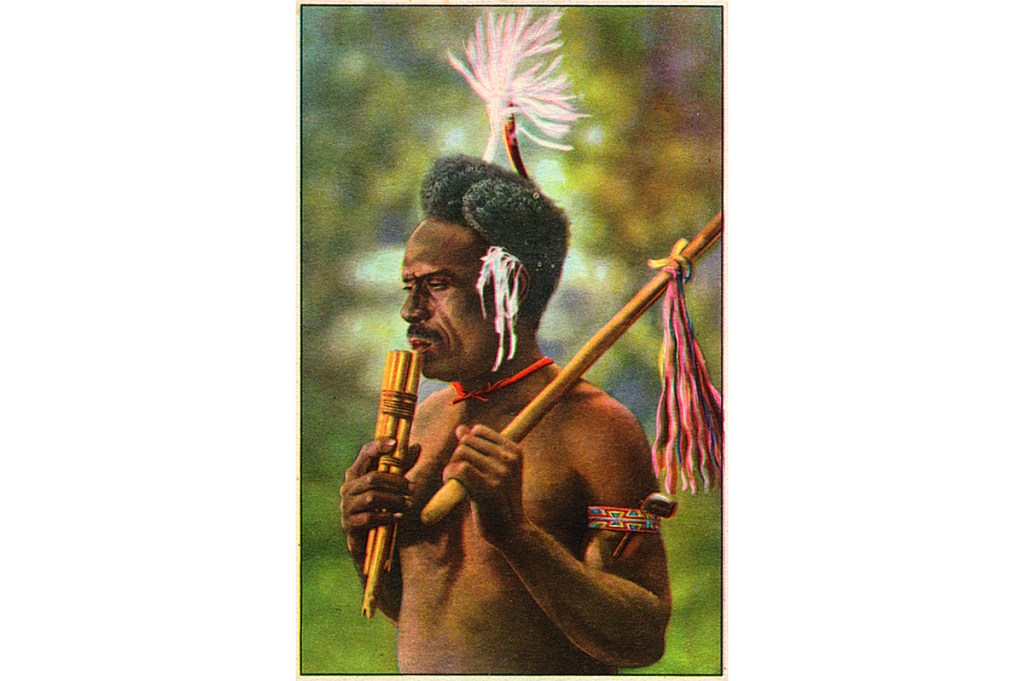I was first sent a version of Undreamed Shores: The Hidden Heroines of British Anthropology in June of last year. I started my review, but publication was delayed. So I tore up my opening paragraphs, which began with the remark that only armchair travel was possible at present. By 2021, I imagined, that would be out of date.
How wrong I was. Ten months later and the book engages even more urgently.
We can all sympathize even more sharply with those female would-be explorers who longed to escape from the restrictions of their lives — though an Edwardian tea party now seems to us like unimaginable freedom.
The past is a foreign country, so there are two layers of escape here. Frances Larson has picked five intrepid women from the remote tribe of early female students at Oxford — that small band of outliers on the fringes of a largely hostile male society. The customs of the country are fascinating. In the 1890s, students at Somerville, a women’s college in Oxford, were expected to kiss the college principal goodnight (an excellent tradition, which should be revived), but priestess-like tutors stripped their votaries of excessive ornamentation. ‘I won’t, I won’t, I WON’T be a dowd!’, protested one victim.
Infiltration of the male realm was slow, but the new discipline of anthropology offered unique opportunities for women. One of Larson’s earliest heroines is Katherine Routledge (née Pease), who escaped the ‘dreary domesticity’ of family life in Darlington, Yorkshire. At 38, she married a colonial drifter, Scoresby Routledge, and traveled with him to Kenya to study the Kikuyu tribe. She adored ‘the gipsy outdoor life’ and quickly proved that the hidden lives of tribal women could best be uncovered by another woman. The Kikuyu were polygamous; their women sympathized with Katherine: ‘Only one wife to do all the work!’
Whether or not polygamy would have helped, the Routledges’ marriage was soon under strain. Katherine was wealthy enough to fund her own expeditions. She built and equipped a boat to visit Easter Island, but all of her crew cordially loathed their employers, who ‘showed an utter lack of courtesy… especially Mrs R’. Rebellion and desertion were constant threats, and when they arrived at Easter Island, their visit coincided with an uprising by the unfortunate islanders, who had become ‘imprisoned laborers’, slaving for a sheep-farming company. Katherine complained of the thieving and unreliability of these ‘grown-up children’.
Wealth had helped Katherine escape, but it also trapped her. It proved a ‘corrosive dynamic’ in her marriage. Prickly and demanding, she was not easy to love, though she was, as her brother saw, ‘morbidly anxious to be loved and liked’. Her marriage ended with literal self-imprisonment: she barricaded herself in the bathroom of her London house against creditors who were demanding that she pay Scoresby’s debts (for warehousing his furniture, which she had thrown out). Her last days were spent shut in a lunatic asylum, hearing the voices of dead relations.
Barbara Freire-Marreco was a gentler and more receptive pioneer. Born in Surrey, she taught herself enough Greek in six weeks to enter Oxford in 1902 and to gain honors in Greats the next year. She was one of the first two students to take the new diploma in anthropology in 1908. Fieldwork was in its infancy, but Barbara lived in the Native American pueblo settlements of New Mexico. As she rapidly recognized, ‘all the virtue of uncivilized rites lies in secrecy’, but an unexpected breakthrough came when she mentioned that her grandfather owned a green parrot: ‘The effect was as if I had said that I was heir to a gold mine.’ Parcels of parrot feathers sent from home helped to break down suspicious silences.
Making friends introduced new difficulties: ‘It is so hard to think of them as material.’ She describes failing to explicate the strange rituals of an English foxhunt: ‘I love the family too well to do much anthropologizing on them; but it is great fun to see them doing it on me!’
Self-deprecating kindness, however, did not help with a career. She lectured in Oxford in 1911 but turned down jobs in the United States in order to look after her parents. In 1920 she married a mathematician she had met during the war and dwindled into ‘Mrs Aitken’.
Maria Czaplicka was altogether fiercer and lonelier. She had no money and no family outside Poland. She arrived in England in 1910 on a traveling scholarship and proved a splendidly ferocious try-hard. Her extraordinary fieldwork took her to the stark, alien depths of Siberia in search of nomadic reindeer-herders who had never seen a European woman. She wore inner stockings and gloves of dog hair; the reindeer regarded her sheepskin coat as a snack, and her powers of endurance, even when hallucinating or vomiting blood, were formidable.
Tragically, courage and toughness were not enough to win through back home. She briefly obtained the first female lectureship in Oxford but was displaced when the men came home from war. Her job was given to a languidly unenthusiastic young academic, who professed ‘profound ignorance’ of anthropology. Maria had to scrape and scrabble for minuscule grants all her life. Finally, she swallowed five pills of mercuric chloride, alone in the room in Bristol where she was lodging.
Maria suffered the lifelong loneliness of an exile; Winifred Blackman found a new home in Egypt. She started her academic life as a cataloguer in Oxford’s Pitt Rivers Museum in 1913. Work in museums proved a useful entrée for women, whose domestic skills turned out to be useful in handling precious artifacts. Winifred escaped on her first trip abroad at 48, accompanying her brother Aylward, an Oxford archeologist, to study ancient burial sites at Meir.
She quickly made real friends with the Egyptian site workers and servants. For the next 19 years, she lived during the field season in a mud-brick house among the fellahin; she was warmly welcomed and widely known. Winifred became, perhaps, almost too comfortably embedded, and after her first book, in 1927, did not publish again. Her visits to Egypt ended with the outbreak of war.
When Beatrice Blackwood sailed to the Solomon Islands in 1929, she was determined to escape from being ‘a mere snapper-up of museum specimens’ and to do real fieldwork. The problem she faced was that the interestingly uncorrupted tribes of the interior were deemed too ‘savage’ for females to visit. The government anthropologist tried to fob her off with villages where, as the locals put it: ‘Mission e capsize altogether fashion belong before.’
She persisted, but the least contaminated tribe she could find, on a trip to New Guinea, proved a hard nut to crack. Personal names were secret among the Anga and it was taboo to mention the names of the dead. Their ‘two main — and almost only — interests were food and fighting’. Her best asset proved to be a kitten; ‘some of the toughest old warriors would spend hours trailing bits of string for her to play with’. A charming photograph proves that a ‘cootchie coo’ face transcends ethnic boundaries.
Beatrice felt herself a failure, making, she thought, no real breakthroughs. But when she returned from New Guinea in 1938, she brought with her more than 2,000 artifacts and reels of invaluable film, three of which survive in the Pitt Rivers Museum. Despite her yearnings for the freedom of fieldwork, she ended up as a museum curator, albeit one of the best — determinedly private, but passionately knowledgeable.
Undreamed Shores is a fascinating book. Occasionally it seems a struggle to contain five such varied lives in one volume, but that frustration is precisely because Larson succeeds brilliantly in engaging our sympathy for these women who ‘dared to navigate the edges of society’.
This article was originally published in The Spectator’s June 2021 World edition.

























